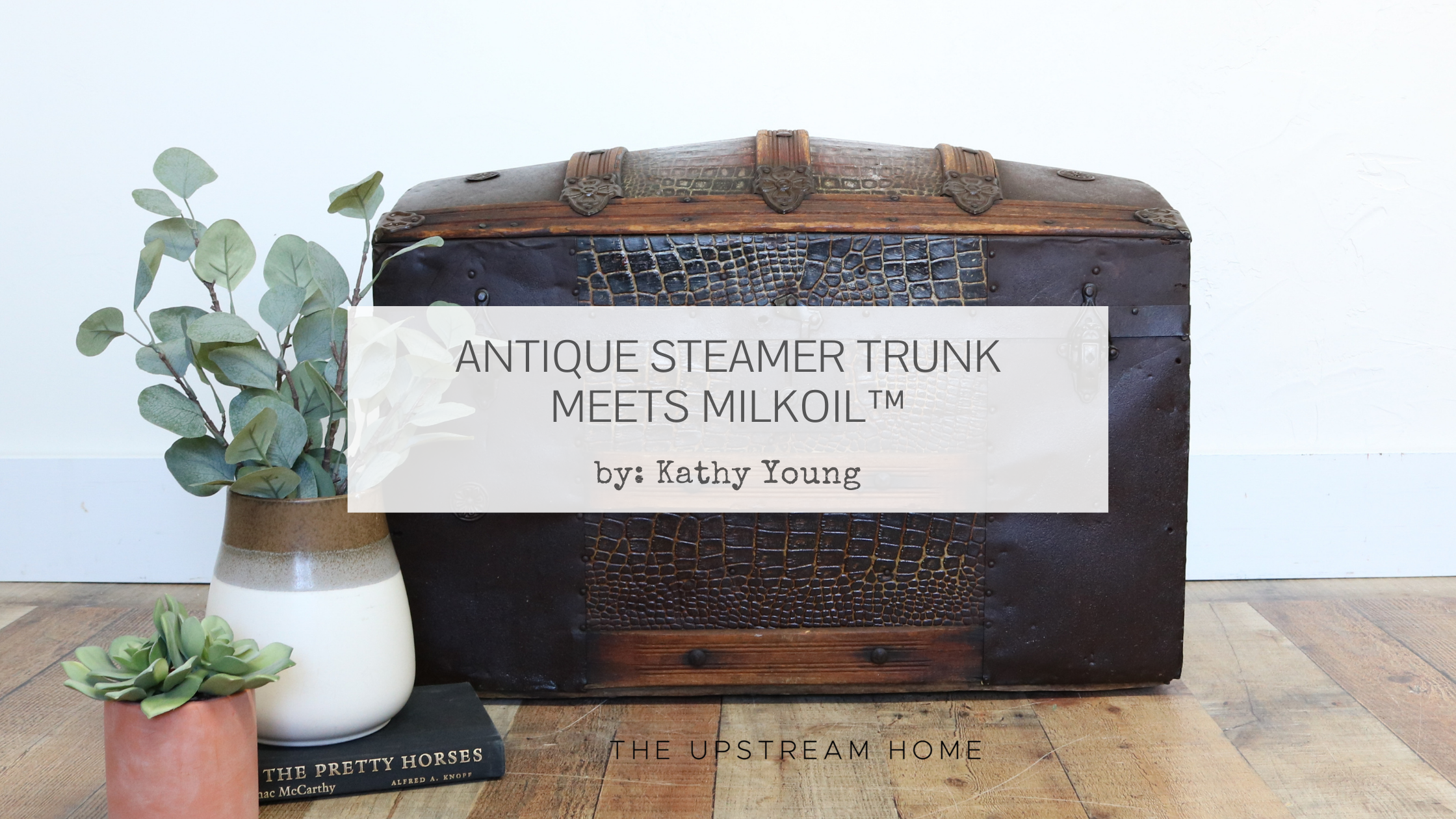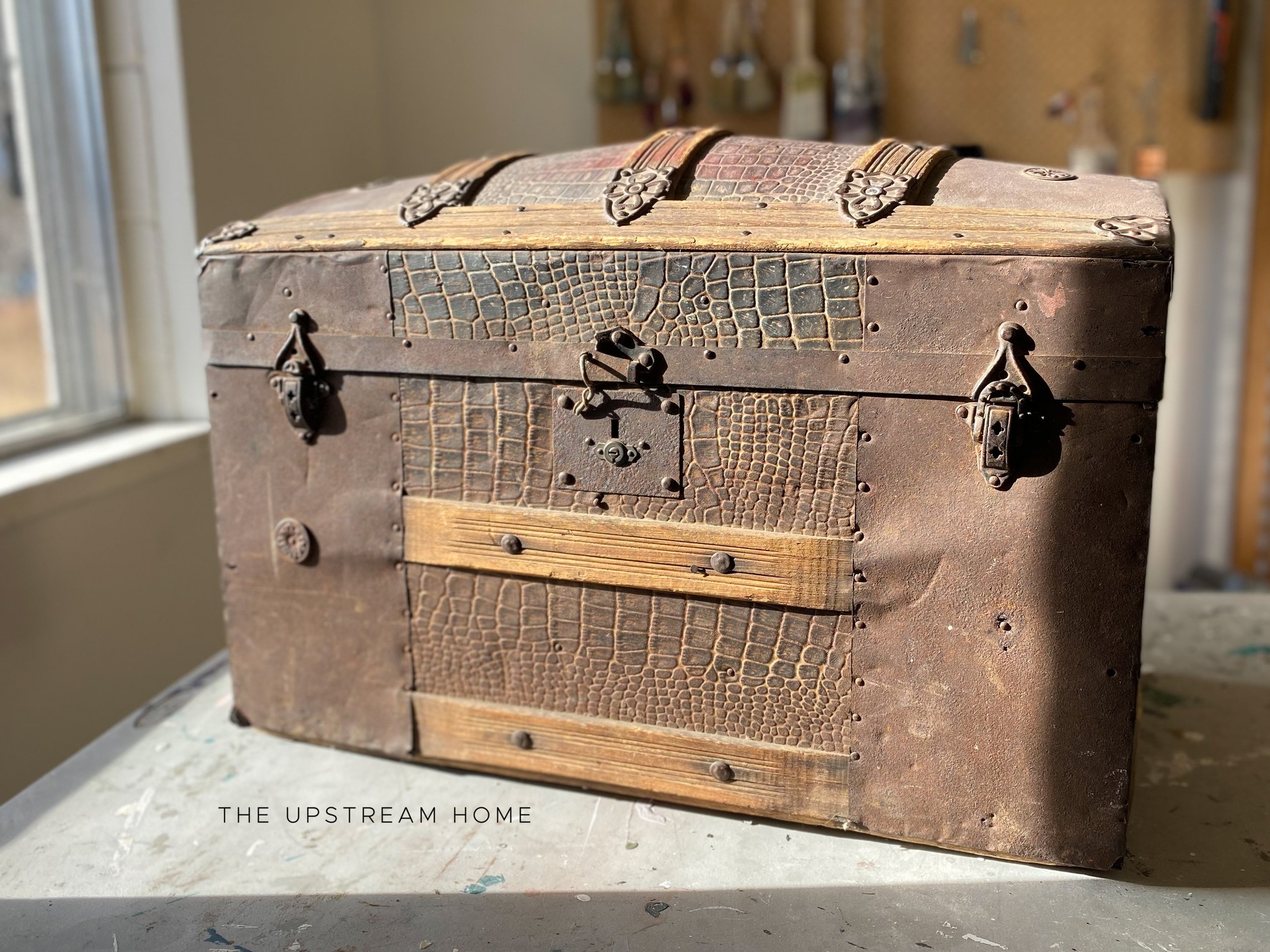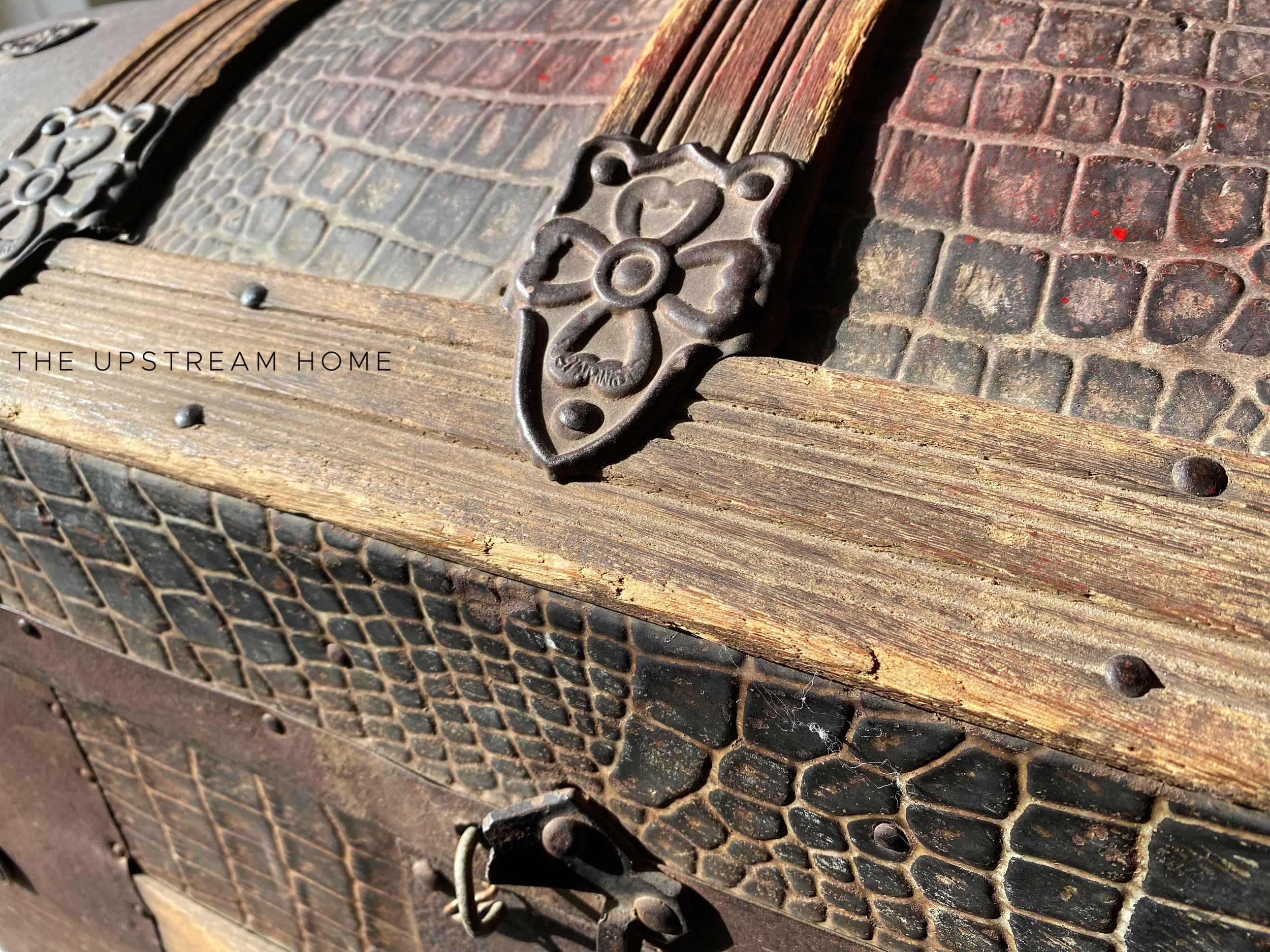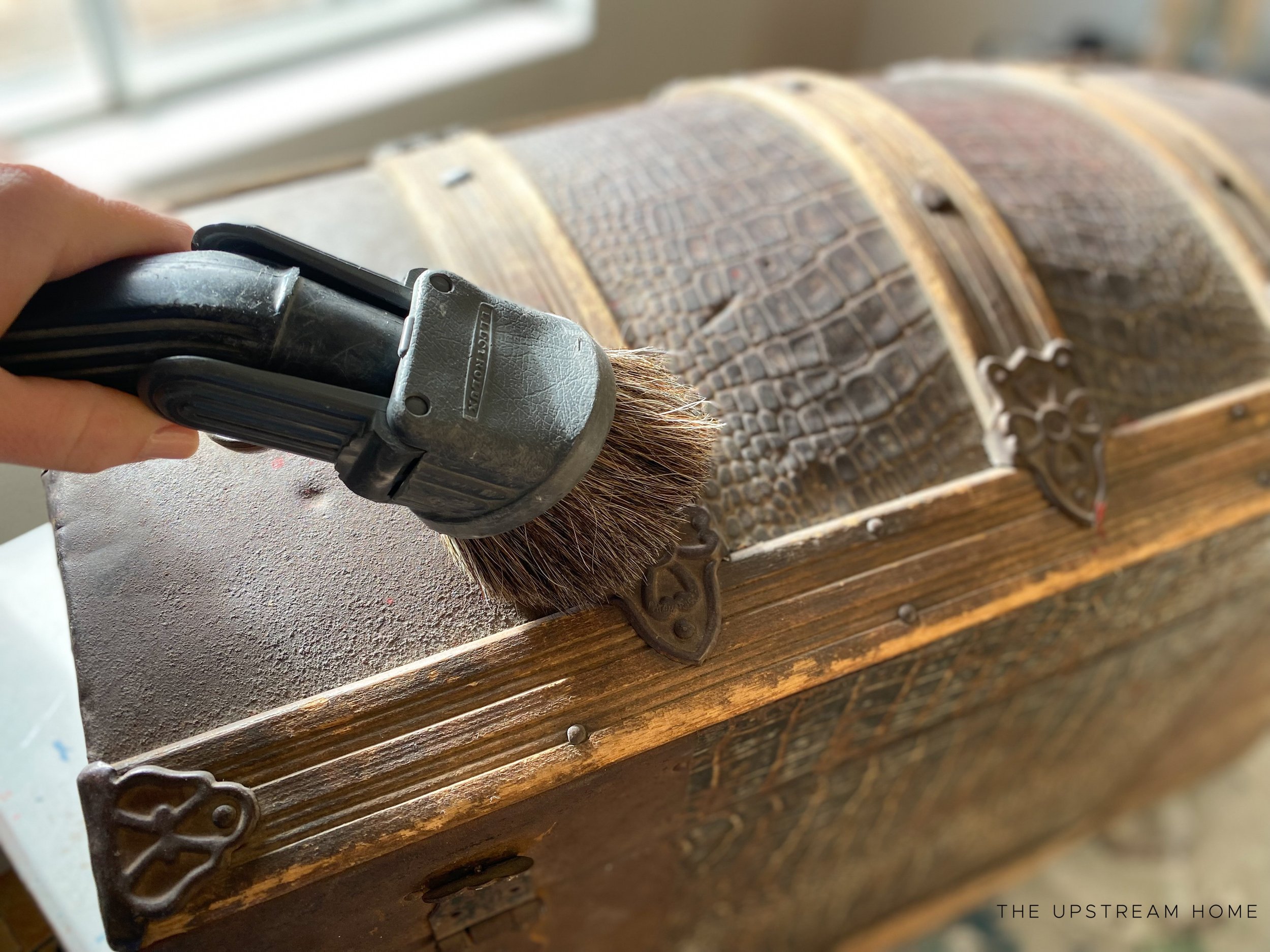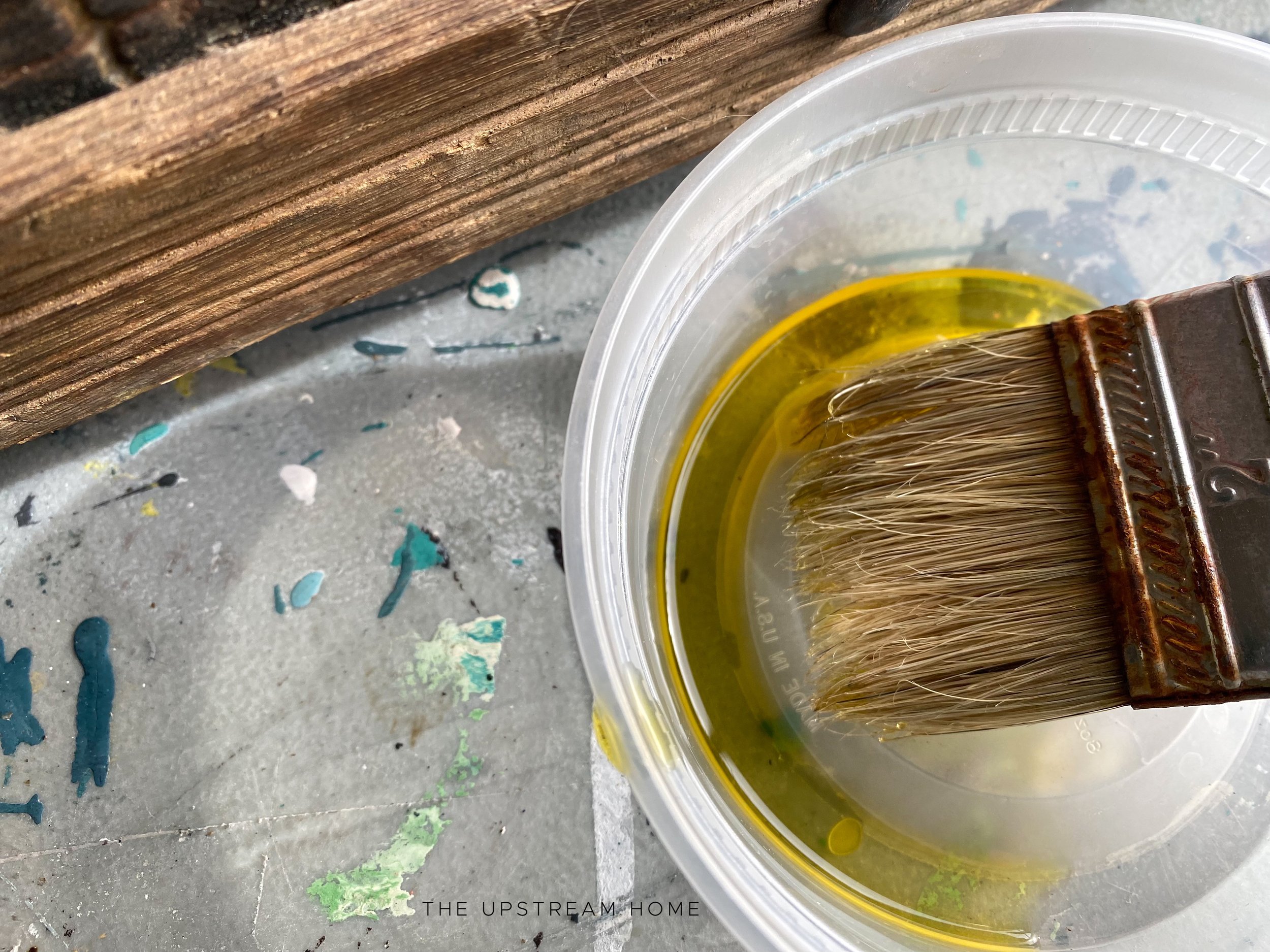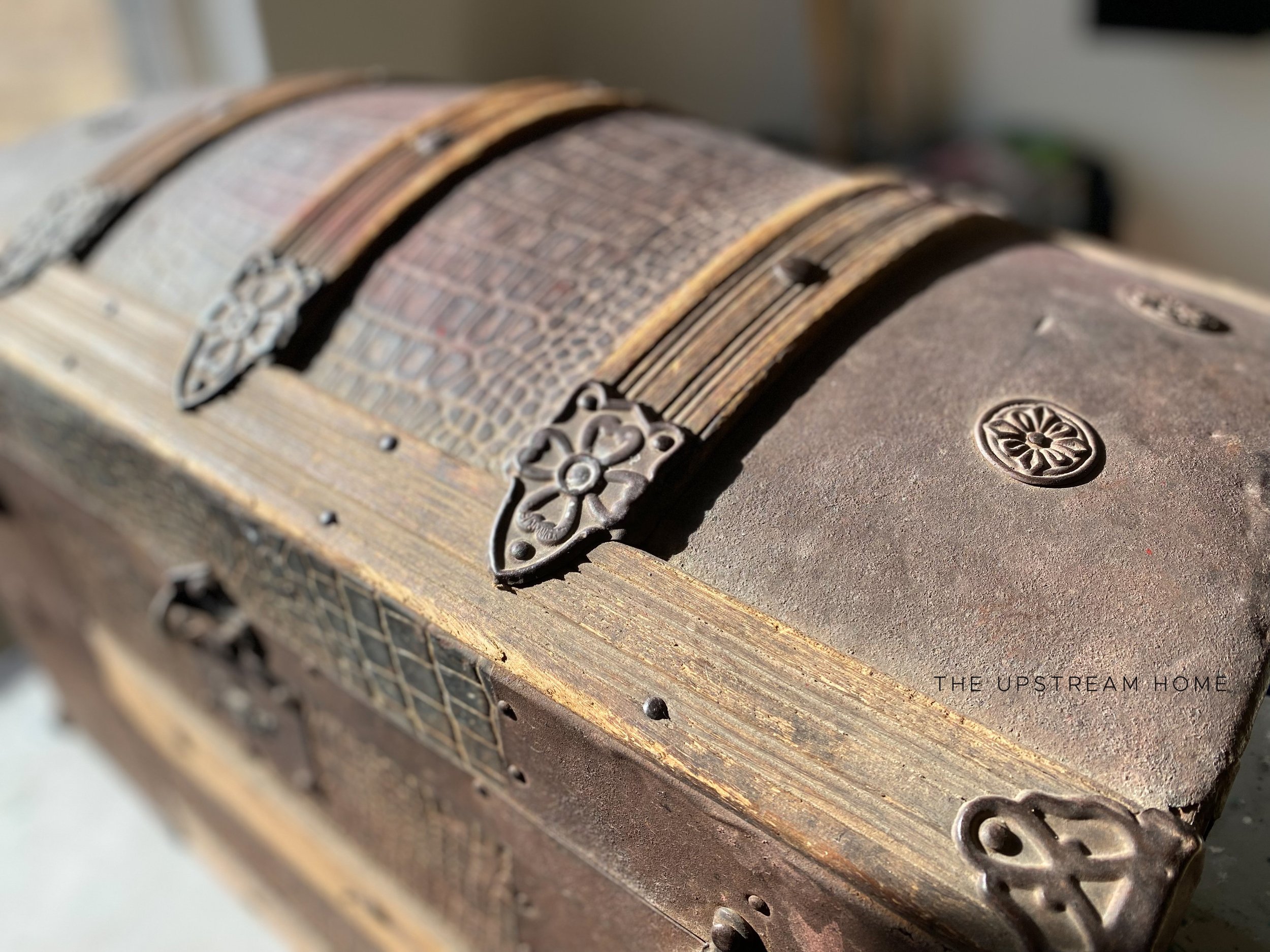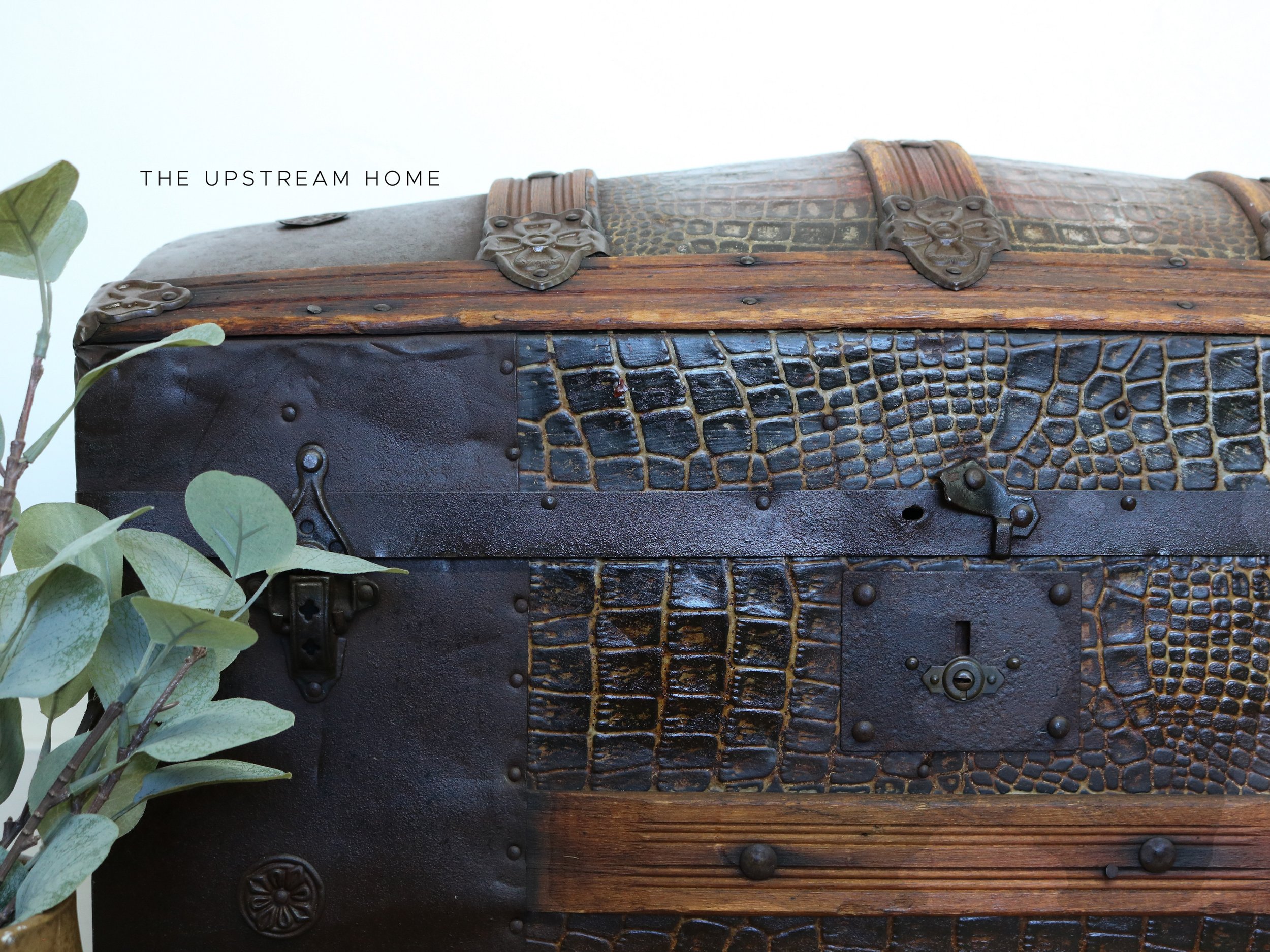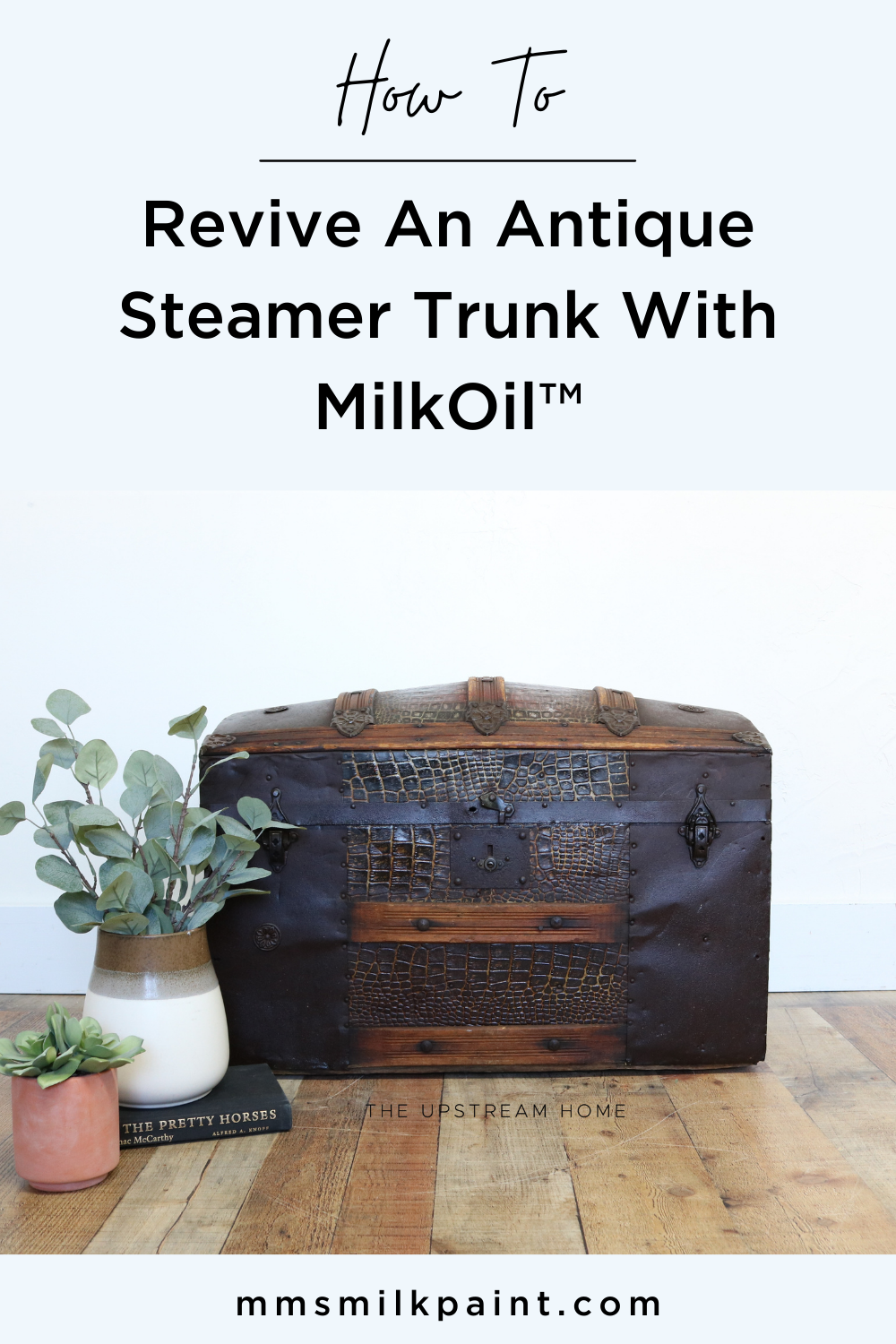Antique Steamer Trunk Meets MilkOil™
How To Revive An Antique Trunk With MilkOil™
Who loves a quick DIY project?! My favorite type of project will always include painting furniture, which tends to take some time, but there is a time and place for a speedy DIY project too! When I’m looking to quickly spruce up a piece of furniture, MilkOil™ (previously known as Hemp Oil), is my go-to! I’ve used it on numerous pieces of wooden furniture, and today we’re going to tackle reviving this antique steamer trunk adorned with metal, wood, and leather with MilkOil.
If you’d like to watch this product in action, scroll to the end of my post and watch my video tutorial. You can follow along here while you watch too!
Disclaimer: This blog post contains affiliate links.
Antique Steamer Trunk
This fabulous steamer trunk, with its embossed alligator skin pattern and more feminine floral embellishments, caught my attention immediately. These camelback trunks, a status symbol of the 19th century, were used by the elite, securing their belongings a spot on top of everyone else's stacked luggage. The four sunk casters, still intact, tell a story of cobblestone roads and great adventure. I expected to find a musty smell when I opened this trunk, but to my delight, this piece was quite clean and completely free of odor. Win!
This project is truly quite simple. We’re going to talk through the specifics of refreshing this trunk using MilkOil™ today. As we do, think through your home and what antique items you already own that could use a little sprucing up. Maybe it’s a trunk, a vintage kitchen scale, or your grandmother’s apple corer. Of course, wooden objects are fair game too!
Items Used While Refreshing This Metal Trunk
Wide-Mouth Plastic Container
Before Using MilkOil™, Clean!
We know with painting projects, it is important to clean first so that we don’t seal dust, dirt, and grime into our project. This is no different when using MilkOil™. I prefer to use my trusty shop vac and a soft horsehair brush attachment that will work into the details without scratching the surface.
Given that the interior paper trim is still largely attached, I decided to lightly vacuum the interior of the trunk and then call it good. MilkOil™ would saturate and damage the paper, so although it’s an excellent choice for reviving lots of surfaces, avoid using it directly on paper.
Applying MilkOil™
Once your project is clean, you’re ready to apply MilkOil™. This is my favorite part, as you will literally watch your project transform before your eyes! Grab an inexpensive chip brush and an old container to pour a bit of MilkOil™ into, and you’re ready!
How Much MilkOil™ Will You Need?
The secret to using MilkOil™ is a little goes a long, LONG way! While oiling this trunk, I will use approximately 2 tbsp of MilkOil™. I prefer to pour my MilkOil™ into a separate container so that as I’m brushing the oil onto my project and then dipping my brush back into the oil, should my surface still have some little pieces of dirt, I’m not contaminating the whole bottle when I re-dip my brush.
Lightly Apply MilkOil™
When dipping your brush in the oil, just dip about ¼” of your brush into the MilkOil™. There’s no need to be heavy-handed with this generous product. After dipping your brush, wipe it against the side of your container to remove any excess, and then apply to your project! With this trunk, I both brushed and dabbed to be sure I got into all the nooks and crannies. I wanted to make sure I got all of the beautiful floral embellishments and the alligator skin embossed metal to shine.
Let Time Do Its Thing!
Waiting is the hardest, right?! Just like we have to wait for the paint to dry, MilkOil™ needs us to be patient too! Once the surface is fully oiled, allow two hours before applying a second coat, if necessary. This steamer trunk only needed one application, so after oiling, I allowed it to sit overnight and came back the next day to lightly buff any excess oil off with a lint-free rag. These shop towels are my favorite as they’re both durable and inexpensive. Because antique metal tends to be a little rough and weathered, I was very gentle with the buffing to be sure I wasn’t leaving lint behind. If working on a smooth, wooden surface, you would not have this obstacle and could buff as usual!
What To Expect From MilkOil™
When applying MilkOil™, you will quickly notice that it deepens the color of your project, bringing depth and character to your piece. Your surface should be dry within 24 hours and cured in 30 days. You may use your piece lightly during this time.
Using MilkOil™ On My Steamer Trunk Video Tutorial
Last week, I went live on Miss Mustard Seed’s® Milk Paint’s Facebook page to show this whole process in action. You can enjoy that demonstration below:
This Antique Steamer Trunk Is Available For Sale!
Love this particular trunk with the embossed alligator skin details, wood trim, and original casters? This antique steamer trunk from The Upstream Home is now available to purchase and can be shipped nationwide!
It’s your turn now!
What will you use MilkOil on first?! Your own steamer trunk? A vintage rolling pin? An antique end table? Be prepared….once you start using MilkOil, you won’t want to stop!

